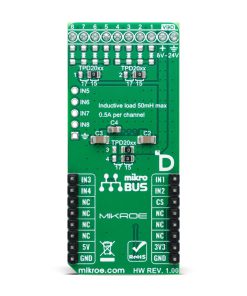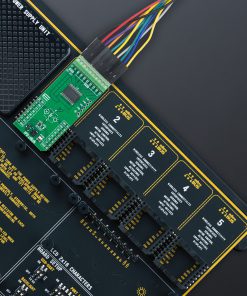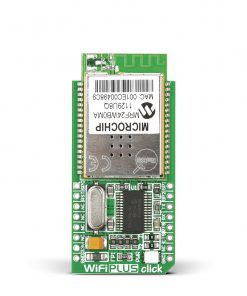IPD Click – TPD2015
R370.00 ex. VAT
IPD Click is a compact add-on board for controlling inductive and resistive loads in industrial automation and other demanding applications. This board features the TPD2015FN, an 8-channel high-side switch with MOSFET outputs from Toshiba Semiconductor. This component is directly compatible with CMOS and TTL logic, making it ideal for driving motors, lamps, and industrial programmable logic controllers. It has protection against overcurrent and overheating, ensuring system stability and safety under various operating conditions, supports inductive loads up to 50mH with a current capacity of 0.5A per channel, and accepts an external power supply ranging from 8-24V. It offers flexible integration options with inputs for direct output control, load decoupling diodes, and pre-configured jumpers for easy setup. This Click board™ is the perfect solution for developers searching reliable load management in factory automation, industrial control systems, and similar applications.
IPD Click is fully compatible with the mikroBUS™ socket and can be used on any host system supporting the mikroBUS™ standard. It comes with the mikroSDK open-source libraries, offering unparalleled flexibility for evaluation and customization. What sets this Click board™ apart is the groundbreaking ClickID feature, enabling your host system to seamlessly and automatically detect and identify this add-on board.
Stock: Lead-time applicable.
| 5+ | R351.50 |
| 10+ | R333.00 |
| 15+ | R314.50 |
| 20+ | R302.66 |


























